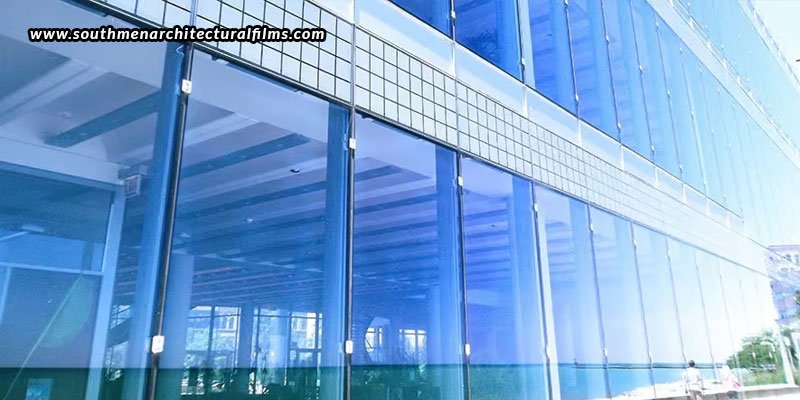Although window safety films are well known for their capacity to increase comfort and security, they also play a significant role in energy conservation and sustainability. Homeowners and companies are searching for solutions to lessen their carbon impact as environmental awareness rises. Window safety films are a potent remedy since they increase energy efficiency while also reducing waste and promoting environmentally friendly building and remodelling methods. This blog will discuss how window safety films help save energy, cut down on glass waste, and use environmentally friendly products to support sustainability goals.
Energy savings and sustainability
One of the most significant environmental benefits of window safety films is their ability to enhance energy efficiency in homes and buildings. These films assist control indoor temperatures by minimizing heat transmission through glass, which lessens the need for excessive heating or cooling. Consequently, less energy is used, which in turn results in fewer greenhouse gas emissions from power plants.
Temperature regulation
Window safety films function by either absorbing or reflecting sunlight that enters through the windows. They help keep interiors cooler without overusing air conditioning during the sweltering summer months by blocking a significant amount of the sun’s heat from entering a structure. The same films serve as insulators in the winter, keeping people warm and lowering the need for heating systems. Window films are a cost-effective and ecologically friendly solution since they help minimize energy consumption and utility bills by enhancing temperature regulation.
Energy-efficient buildings
Energy conservation is a top priority in sustainable building design, and window films are essential to reaching this objective. Windows can lose as much as 30% of a building’s energy used for heating and cooling. This energy loss can be considerably reduced by installing energy-efficient window films, which also lowers the building’s overall energy usage. Because of this, they are frequently chosen for green building certifications that promote the use of sustainable systems and materials.
Eco-friendly materials and options
The window film industry is adopting eco-friendly methods as sustainability rises to the top priority. There is a growing trend of manufacturers creating window safety films with sustainable development and eco-friendly components.
Non-toxic materials and adhesives
The materials used to make some window films in the past may have contained hazardous chemicals or off-gas volatile organic compounds (VOCs), which could have a detrimental effect on the quality of the air within. Nonetheless, a lot of contemporary window films are now produced using eco-friendly ingredients and non-toxic adhesives. These films are composed of polyester-based plastics, which are safe for indoor use, in addition to being robust and long-lasting. To ensure that their products leave as little environmental impact as possible, some brands have also created recyclable or biodegradable films.
Standards and certifications
A lot of ecologically sound window safety films also have certificates that attest to their effectiveness in protecting the environment. Certain certifications offer clarity on the impact of the product’s life cycle, from the extraction of raw materials to the disposal of the product at the end of its useful life. Other certifications depict how the films use less energy, supporting energy saving programs. Look for such certificates when choosing window safety films to make sure the product complies with sustainability standards.
Cutting down on glass waste
Although glass is a strong material, it is very prone to breaking. Windows that are broken by mishaps, vandalism, or severe weather frequently need to be replaced, which increases the amount of glass debris that ends up in landfills. By strengthening the glass’s structural integrity and making it far more difficult to break, window safety films serve to lessen this issue, thus saving on glass waste.
Extending the life of windows
Safety films provide a layer of protection that keeps glass unbroken even when it cracks, reducing the need for regular window replacements. The safety film keeps the shattered fragments together in the case of an impact, like a storm or unintentional damage, halting the spread of potentially harmful shards. This implies that the window might just need modest repairs rather than a complete replacement, thus lowering the quantity of glass waste produced.
Reducing the need for replacement
Because safety films extend the life of windows, fewer materials are required for replacements. By lowering the demand for new glass manufacturing, less energy is needed to make, transport, and dispose of glass, which helps save natural resources. Safety films help reduce the overall environmental impact of window-related waste and promote more sustainable building practices by prolonging the life of existing windows. Window safety films work to contribute significantly to energy conservation, glass waste reduction, and sustainable building practices in addition to offering protection and aesthetic advantages. Businesses and homeowners can help the environment by choosing films that encourage energy efficiency and are made of eco-friendly materials. Window safety films provide a clever and environmentally responsible solution, serving as a crucial tool in the pursuit of greener, more sustainable living, whether your goal is to lower your carbon footprint or make your area safer and more sustainable. For those looking to upgrade their windows with an environmentally friendly and durable solution, Southmen’s window safety films in Jayanagar provide the ideal blend of sustainability, energy efficiency, and protection, ensuring that your space is both safe and eco-friendly for the future.




